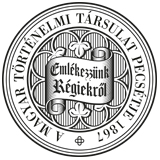Századok – 2011
TANULMÁNYOK - Vonyó József: Gömbös kormánypártjának ideológiája és programja I/3
GÖMBÖS KORMÁNYPÁRTJÁNAK IDEOLÓGIÁJA ÉS PROGRAMJA 37 3. Mindezek következtében nyilvánvaló, hogy Gömbös és környezete — taktikázó magatartása ellenére — radikális váltásra törekedett Bethlen, és a képviselőház őt támogató kormánypárti többségének politikájához képest. Ez a fajvédő alapokon, részben a nemzetiszocialista, de főként a fasiszta társadalom- és államfelfogásra rímelő, s — a hasonló jegyek ellenére — a bethleni korszak ideológiájától markáns, sőt alapvető eltéréseket mutató ideológia — az „új generáció", „új nemzet", „új magyar élet" fogalmakkal definiált — új nemzettudat, új nemzeti identitás kialakítását is szolgálta. THE IDEOLOGY AND PROGRAM OF THE GOVERNING PARTY OF GYULA GÖMBÖS by József Vonyó (Summary) The policies pursued by Gyula Gömbös as prime minister (1932-1936) still fuel heated debates in Hungarian historiography. Whereas most historians attribute totalitarian aspirations to the former racist leader, others, especially since 1990, regard him as a conservative reformer. The main source of these disputes is that most of these qualifications were based on a judgement of his governmental activities, and paid little or no attention at all to his role as head of the governing party, which he had organised into a modern mass party, and to its role within the political life of contemporary Hungary. And all this despite the fact that Gömbös himself intended his Party of National Unity to play a decisive role in accomplishing his political aims. The aim of the present study is to contribute to a real and balanced evaluation of the policies of Gömbös by the analysis of his party's program and the reconstruction of its ideology from new points of view. Upon comparison of the so-called National Workplan, which contained the program of the government and of the governing party, with the rasist program of the 1920s in the context of contemporary circumstances, it can safely be stated - in contrast with the conclusions of previous historiography - that it in fact reflects concrete political objectives. In terms of economic, social and cultural policy, these objectives are entirely in keeping with the notions and expectations represented by Gömbös and his allies a decade before. Although the document contains no overt measures against the Jews, the plans intended to limit plutocracy and the parallel, emphatic demand to protect agriculture and small and medium-size industry clearly indicate the aim of curbing Jewish economic dominance. This — together with other things — seems to show that Gömbös, far from abandoning his anti-semitism, only concealed it for tactical purposes. A key element of the socio-political vision of party leadership was the achievement of territorial revision, and the parallel „reconstruction" of Hungaiy's leading role in the region. In the manner of other right-wing radical movements, they blamed liberalism and socialism for the weakening of Hungary, which led to her tragedy in 1918-1920. The solution was seen in the politics of „national self-help" (Hung. Nemzeti öncélúság), the basic means of which was the establishment of „national unity". The former expected the individuals to abandon their personal ambitions in order to promote the realisation of common national aims determined by the central power. On the basis of their organic view of society they regarded social inequalities as a natural phenomenon, and thought of the wellbeing of given social groups as dependent on the general prosperity of the whole national community. A means to achieve the desired „national unity" was the movement and party which bore the same name, into which they wanted to organise all voting citizens regardless of their social, ethnic or confessional attachment. It was in order to avoid the potentially disruptive effect of confessional differences that they dropped from their ideological manifestos the so-called „christian-national idea", which was one of the basic ideological catchwords in the 1920s. On the basis of the economic and cultural conceptions, and the views concerning the organisation of the state and the role of the extremely centralised party within it, with a clear emphasis on the leading role of Gömbös himself, which were elaborated among the party leadership and its intellectual supporters, it can be stated that the ideology of the Party of National Unity clearly reflected the picture of a classic totalitarian state.
